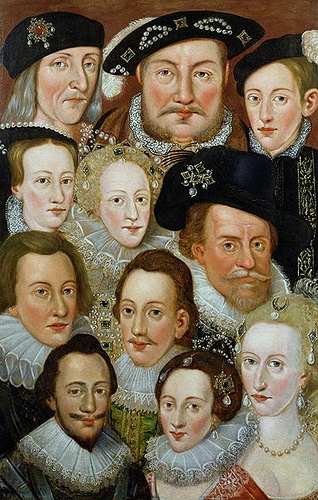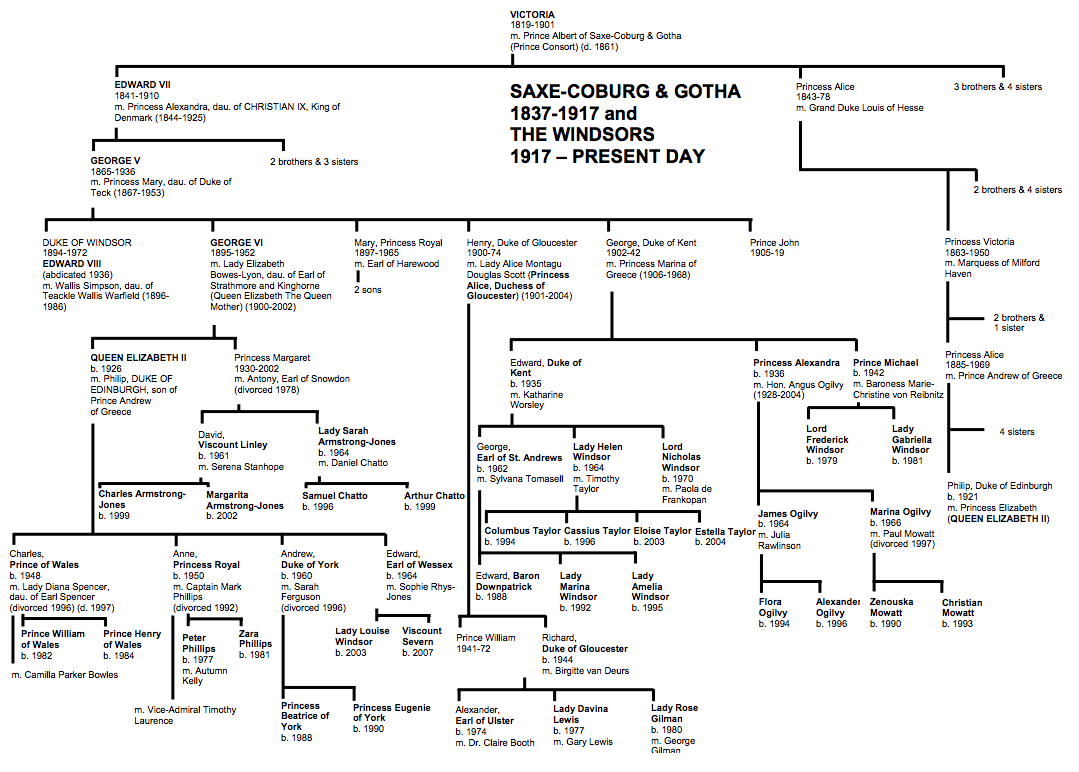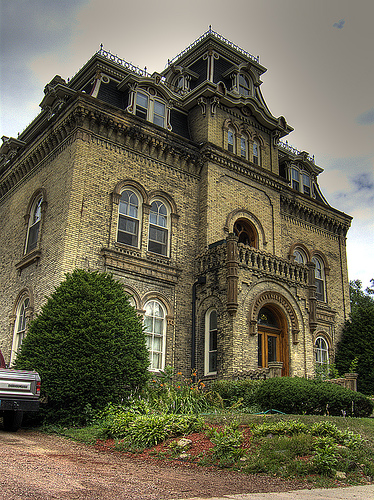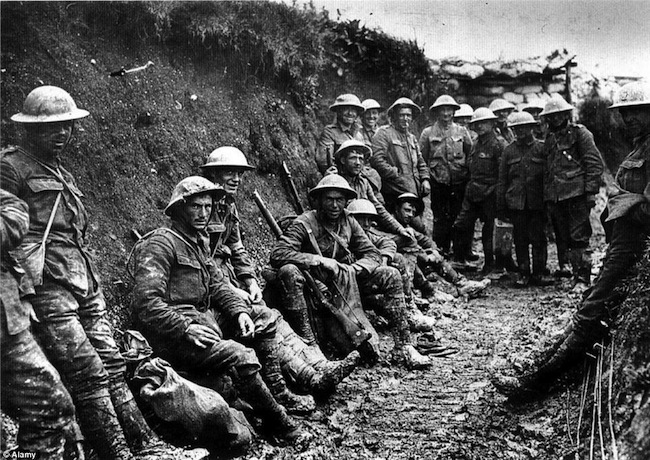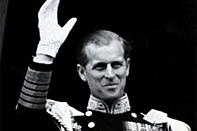 The Duke of Edinburgh celebrated his 90th birthday on 10 June 2011. Since The Queen’s accession, His Royal Highness has played a prominent part in many aspects of national life. In this section you can find out more about The Duke of Edinburgh’s interests and involvements, view a gallery of images from his childhood through to the present day and watch videos of His Royal Highness on public engagements with Her Majesty.
The Duke of Edinburgh celebrated his 90th birthday on 10 June 2011. Since The Queen’s accession, His Royal Highness has played a prominent part in many aspects of national life. In this section you can find out more about The Duke of Edinburgh’s interests and involvements, view a gallery of images from his childhood through to the present day and watch videos of His Royal Highness on public engagements with Her Majesty.
[accordion]
[accordion_pane accordion_title=”The Prince of Wales”]
The Prince of Wales, eldest son of Queen Elizabeth II and Prince Philip, Duke of Edinburgh, is Heir Apparent to the throne.
The Prince was born at Buckingham Palace on 14 November 1948, and was christened Charles Philip Arthur George.
When, on the accession of Queen Elizabeth in 1952, he became heir apparent, Prince Charles automatically became Duke of Cornwall under a charter of King Edward III dating back to 1337, which gave that title to the Sovereign’s eldest son. He also became in the Scottish Peerage, Duke of Rothesay, Earl of Carrick and Baron Renfrew, Lord of the Isles, and Prince and Great Steward of Scotland.
The Prince was created Prince of Wales and Earl of Chester on 26 July 1958, becoming the first Prince of Wales since 1936. Although investitures of Princes of Wales were traditionally held in front of Parliament, and not all Princes of Wales have been invested, the investiture of the present Prince of Wales (like that of his predecessor Prince Edward, later Edward VIII, in 1911) was a State occasion.
It took place in a Welsh setting before the Welsh people, at Caernarfon Castle on 1 July 1969. The Welsh regalia (Crown Jewels associated with the Princes of Wales) used at the investitures in 1911 and 1969 are on loan to the National Museum of Wales in Cardiff.
On 29 July 1981, The Prince of Wales married Lady Diana Spencer in St Paul’s Cathedral who became HRH The Princess of Wales.
The Princess was born on 1 July 1961, at Park House on The Queen’s estate at Sandringham, Norfolk. She lived there until the death in 1975 of her grandfather, the 7th Earl, when the family moved to the Spencer family seat at Althorp House in Northamptonshire.
Lady Diana’s father, then Viscount Althorp and later the eighth Earl Spencer, had been an equerry to both George VI and The Queen. Her maternal grandmother, Ruth, Lady Fermoy, was a close friend and lady in waiting to The Queen Mother.
The Prince and Princess of Wales had two sons: Prince William, born on 21 June 1982; and Prince Harry, born on 15 September 1984.
From the time of their marriage, The Prince and Princess of Wales went on overseas tours and carried out many engagements together in the UK.
On 9 December 1992, the Prime Minister, John Major, announced to the House of Commons that The Prince and Princess of Wales had agreed to separate.
The marriage was dissolved on 28 August, 1996. The Princess was still regarded as a member of the Royal Family. She continued to live at Kensington Palace and to carry out her public work for a number of charities.
When The Princess was killed in a car crash in Paris on 31 August 1997, The Prince of Wales flew to Paris with her two sisters to bring her body back to London. The Princess lay in the Chapel Royal at St James’s Palace until the night before the funeral.
On the day of the funeral, The Prince of Wales accompanied his two sons, aged 15 and 12 at the time, as they walked behind the coffin from The Mall to Westminster Abbey. With them were The Duke of Edinburgh and The Princess’s brother, Earl Spencer. Click here to find out more about the life and work of Diana, Princess of Wales.
The Prince of Wales asked the media to respect his sons’ privacy, to allow them to lead a normal school life. In the following years, Princes William and Harry, who are second and third in line to the throne, accompanied their father on a limited number of official engagements in the UK and abroad.
The Prince of Wales married Mrs Camilla Parker Bowles on 9 April 2005 at a civil ceremony at the Guildhall in Windsor, followed by a service of prayer and dedication in St. George’s Chapel, Windsor Castle.
After the wedding, Mrs Parker Bowles became known as HRH The Duchess of Cornwall. When The Prince of Wales accedes to the throne, she will be known as HRH The Princess Consort.[/accordion_pane]
[accordion_pane accordion_title=”The Duchess of Cornwall”]
The Duchess of Cornwall was born Camilla Rosemary Shand on 17 July 1947 at King’s College Hospital, London.
She is the eldest of three siblings: she has a sister, Annabel Elliot (nee Shand), and a brother, Mark Shand.
As a member of the Royal Family, The Duchess of Cornwall supports her husband, The Prince of Wales, in carrying out his work and duties as Heir to The Throne. She also undertakes public engagements on behalf of her own charities.
The Duchess is Patron or President of a number of charities and attends events to support them. She also supports the work of the British Armed Services both in the United Kingdom and abroad.
Her Royal Highness has her own military appointments and accompanies The Prince on the majority of his visits to the Army, Royal Navy and Royal Air Force.
The Duchess of Cornwall also visits other countries on overseas tours with The Prince of Wales as part of Their Royal Highnesses’s role in supporting The Queen and together, Their Royal Highnesses are among the United Kingdom’s most important ambassadors.
In 2011 – 2012, The Duchess of Cornwall undertook 54 overseas engagements.
The overseas visits are undertaken at the request of the Foreign and Commonwealth Office to further British diplomatic interests, raise the UK’s profile in the country visited and highlight British excellence.[/accordion_pane]
[accordion_pane accordion_title=”The Duke of Cambridge”]
Prince William is the elder son of The Prince of Wales and the late Diana, Princess of Wales. On 29 April 2011, following his marriage to Catherine Middleton, the title The Duke of Cambridge was conferred on him by The Queen.
He was born at 9.03pm on 21 June 1982, at St Mary’s Hospital, Paddington, London. A bulletin announced that the Royal baby weighed 7lb 1 1/2oz.
On 4 August 1982, Prince William Arthur Philip Louis was christened by the Archbishop of Canterbury, Dr Robert Runcie, in the Music Room at Buckingham Palace.
After attending Mrs Mynors School, The Duke became a pupil at Wetherby School in London, from 15 January 1987 until 5 July 1990.
From September 1990, The Duke attended Ludgrove School in Berkshire, for five years until 5 July 1995. He then attended Eton College from July 1995 and studied Geography, Biology and History of Art at A Level.
The Duke was 15-years-old when Diana, Princess of Wales was killed in a car crash in Paris on 31 August 1997. The Duke of Cambridge and Prince Harry walked behind their mother’s cortege at her funeral which was held at Westminster Abbey on 6 September 1997.
After a gap year in which he visited Chile, Belize, worked on British dairy farms and visited countries in Africa, The Duke chose to study at St Andrews University in Fife, Scotland. He graduated with a 2:1 in Geography in 2005.
After a period of work experience, The Duke of Cambridge joined the Royal Military Academy Sandhurst as an Officer Cadet.
He was commissioned as an army officer in front of The Queen at Sandhurst in December 2006 and joined the Household Cavalry (Blues and Royals) as a Second Lieutenant.
He went on to train as an RAF Search and Rescue Pilot with the RAF, graduating as a fully operational pilot in September 2010. The Duke is a fully operational Search and Rescue Pilot with the Royal Air Force, based at Anglesey, Wales.
At the same time, The Duke of Cambridge is President or Patron to a number of charities and organisations whose work he wishes to support.
On 29th May 2012, The Duke of Cambridge said he was ‘honoured’ to be conferred to the Order of the Thistle in the year of The Queen’s Diamond Jubilee.
[/accordion_pane]
[accordion_pane accordion_title=”The Duchess of Cambridge”]
Catherine Elizabeth Middleton was born to Michael and Carole Middleton at the Royal Berkshire Hospital, Reading, on 9 January 1982. The Duchess is the eldest of three children.
The Duchess of Cambridge was christened at the parish church of St. Andrew’s Bradfield in Berkshire on 20 June 1982.
In May 1984, at the age of two, The Duchess moved with her family to Amman in Jordan, where her father worked for two and a half years. Her Royal Highness attended a nursery school in Amman from the age of three.
In September 1986, the Middletons returned to their home in West Berkshire, and Her Royal Highness started at St. Andrew’s School in Pangbourne, where she remained until July 1995. The Duchess went on to Marlborough College in Wiltshire, where she studied Chemistry, Biology and Art at A-level. Her Royal Highness also took part in sport on behalf of the school, playing tennis, hockey and netball and participating in athletics, particularly high jump. The Duchess completed her Duke of Edinburgh Gold Award at Marlborough.
Leaving Marlborough College in July 2000, The Duchess of Cambridge undertook a gap year in which she studied at the British Institute in Florence, undertook a Raleigh International programme in Chile, and crewed on Round the World Challenge boats in the Solent.
In 2001, The Duchess enrolled at the University of St. Andrews, Fife, from where she graduated in 2005 with a 2:1 in History of Art. Her Royal Highness continued with her interest in sport at University, playing hockey for the University team. The Duchess first met The Duke of Cambridge when studying at the University.
Since completing her degree, The Duchess has worked for Party Pieces, a company owned and run by her parents. Alongside her work for the family business, The Duchess worked in London as a part-time buyer for the clothing company Jigsaw Junior.
In 2008, The Duchess launched First Birthdays, a junior brand to Party Pieces. Her role within the family business included catalogue design and production, marketing and photography.
On 29 April 2011, Prince William and Miss Catherine Middleton were married at Westminster Abbey. The couple are now known as The Duke and Duchess of Cambridge.
On 3 December 2012, St James’s Palace released a statement that Their Royal Highnesses were pleased to announce that The Duchess of Cambridge is expecting a baby.
The Duchess’s hobbies include recreational sports such as hill walking, tennis, swimming, sailing, and the arts such as photography and painting[/accordion_pane]
[accordion_pane accordion_title=”Prince Harry”]
Prince Harry is the younger son of The Prince of Wales and Diana, Princess of Wales.
He was born at 4.20pm on 15 September 1984 at St Mary’s Hospital, Paddington, in central London. He weighed 6lb 14oz.
On 21 December 1984, Prince Henry Charles Albert David was christened by the Archbishop of Canterbury, Dr Robert Runcie, in St George’s Chapel, Windsor.
After attending Mrs Mynors School, Prince Harry became a pupil at Wetherby School in London from September 1987.
In September 1992, Harry joined his older brother William at Ludgrove School in Berkshire.
He then attended Eton College from September 1998 where he took his GCSEs and A Levels.
After completing his A Levels, Prince Harry took a gap year during which he visited Australia, Argentina and Africa, where he made a documentary about the plight of orphans in Lesotho.
Prince Harry entered the Royal Military Academy Sandhurst in May 2005.
He successfully completed a 44-week training course as an Officer Cadet, before being commissioned in April 2006 as a Second Lieutenant in the Household Cavalry (Blues and Royals).
During this period, Prince Harry co-founded the charity Sentebale with Prince Seeiso of Lesotho in memory of their mothers to support orphans and vulnerable children in Lesotho. ‘Sentebale’ is the Sotho word for ‘Forget me not’.
In February 2008 Prince Harry completed more than two months service with the British Army in Helmand province, Afghanistan, as a Forward Air Controller for NATO forces.
Prince Harry was promoted from Second Lieutenant to Lieutenant in April 2008.
In January 2009 he began a two-and-a-half year training course to become a fully operational, full-time Army Air Corps helicopter pilot. He remains an officer in the Household Cavalry during the training period.
Prince Harry’s principal residences are at Clarence House in London and Highgrove in Gloucestershire.
A Household Office was set up at St James’s Palace, London, for Prince Harry and for his brother, Prince William, in January 2009 to reflect their growing public lives.
Prince Harry is currently Patron of a number of charities and organisations (including Sentebale) and he holds two honorary military appointments (in the Royal Navy and the Royal Air Force).
His Royal Highness focuses much of his charitable activity around the Princes’ Charities Forum, a grouping of organisations with which he and his brother have close links and which assists in promoting ideas and joint initiatives to the benefit of all the members.[/accordion_pane]
[/accordion]
People often ask whether members of the Royal Family have a surname, and, if so, what it is.
Members of the Royal Family can be known both by the name of the Royal house, and by a surname, which are not always the same. And often they do not use a surname at all.
Before 1917, members of the British Royal Family had no surname, but only the name of the house or dynasty to which they belonged.
Kings and princes were historically known by the names of the countries over which they and their families ruled. Kings and queens therefore signed themselves by their first names only, a tradition in the United Kingdom which has continued to the present day.
The names of dynasties tended to change when the line of succession was taken by a rival faction within the family (for example, Henry IV and the Lancastrians, Edward IV and the Yorkists, Henry VII and the Tudors), or when succession passed to a different family branch through females (for example, Henry II and the Angevins, James I and the Stuarts, George I and the Hanoverians).
Just as children can take their surnames from their father, so sovereigns normally take the name of their ‘House’ from their father. For this reason, Queen Victoria’s eldest son Edward VII belonged to the House of Saxe-Coburg-Gotha (the family name of his father Prince Albert). Edward VII’s son George V became the second king of that dynasty when he succeeded to the throne in 1910.
In 1917, there was a radical change, when George V specifically adopted Windsor, not only as the name of the ‘House’ or dynasty, but also as the surname of his family. The family name was changed as a result of anti-German feeling during the First World War, and the name Windsor was adopted after the Castle of the same name.
At a meeting of the Privy Council on 17 July 1917, George V declared that ‘all descendants in the male line of Queen Victoria, who are subjects of these realms, other than female descendants who marry or who have married, shall bear the name of Windsor’.
The Royal Family name of Windsor was confirmed by The Queen after her accession in 1952. However, in 1960, The Queen and The Duke of Edinburgh decided that they would like their own direct descendants to be distinguished from the rest of the Royal Family (without changing the name of the Royal House), as Windsor is the surname used by all the male and unmarried female descendants of George V.
It was therefore declared in the Privy Council that The Queen’s descendants, other than those with the style of Royal Highness and the title of Prince/Princess, or female descendants who marry, would carry the name of Mountbatten-Windsor.
This reflected Prince Philip’s surname. In 1947, when Prince Philip of Greece became naturalised, he assumed the name of Philip Mountbatten as a Lieutenant in the Royal Navy.
The effect of the declaration was that all The Queen’s children, on occasions when they needed a surname, would have the surname Mountbatten-Windsor.
For the most part, members of the Royal Family who are entitled to the style and dignity of HRH Prince or Princess do not need a surname, but if at any time any of them do need a surname (such as upon marriage), that surname is Mountbatten-Windsor.
The surname Mountbatten-Windsor first appeared on an official document on 14 November 1973, in the marriage register at Westminster Abbey for the marriage of Princess Anne and Captain Mark Phillips.
A proclamation on the Royal Family name by the reigning monarch is not statutory; unlike an Act of Parliament, it does not pass into the law of the land. Such a proclamation is not binding on succeeding reigning sovereigns, nor does it set a precedent which must be followed by reigning sovereigns who come after.
Unless The Prince of Wales chooses to alter the present decisions when he becomes king, he will continue to be of the House of Windsor and his grandchildren will use the surname Mountbatten-Windsor.

